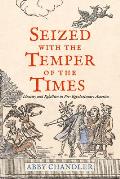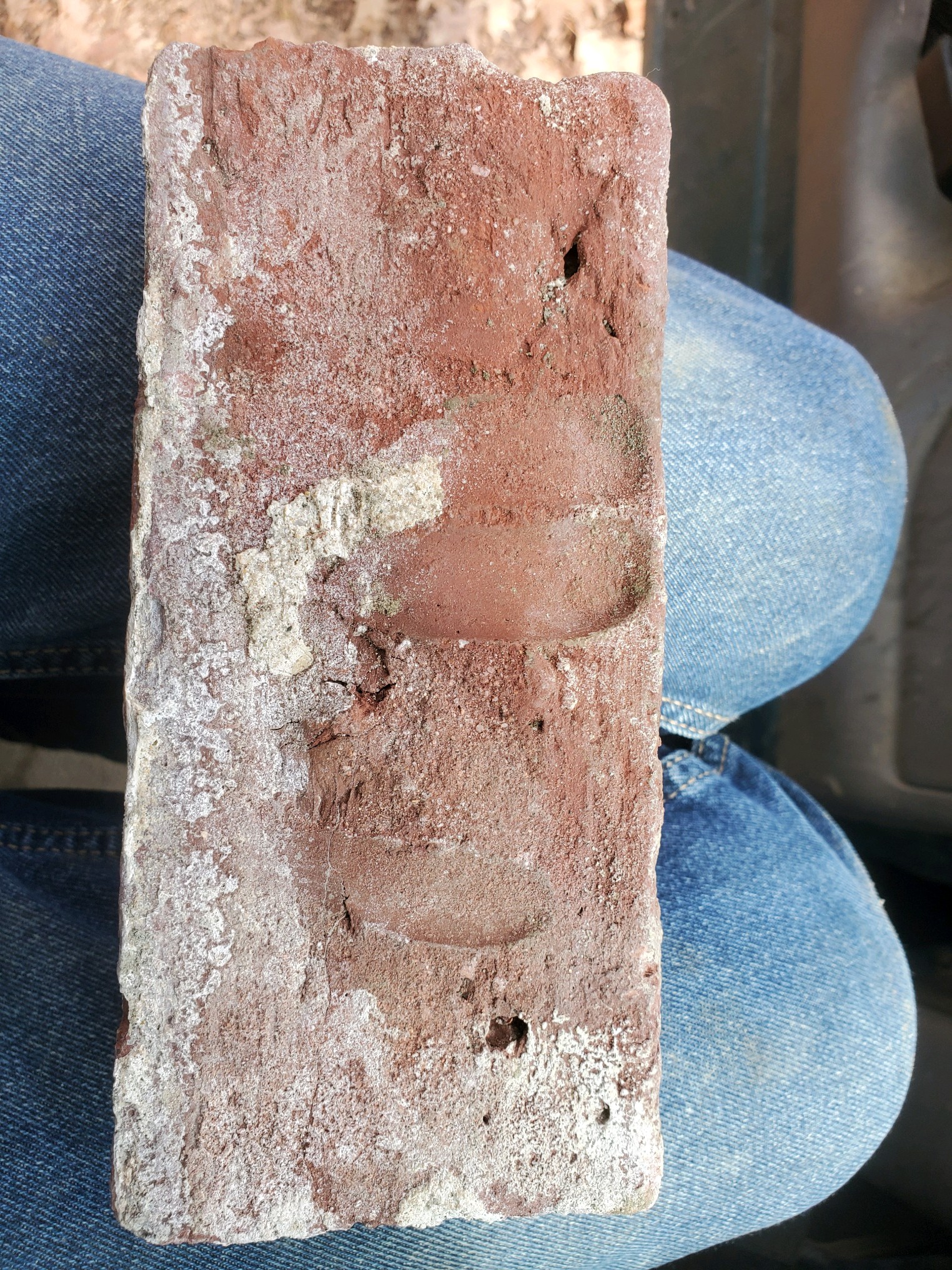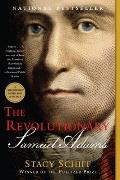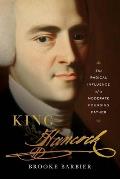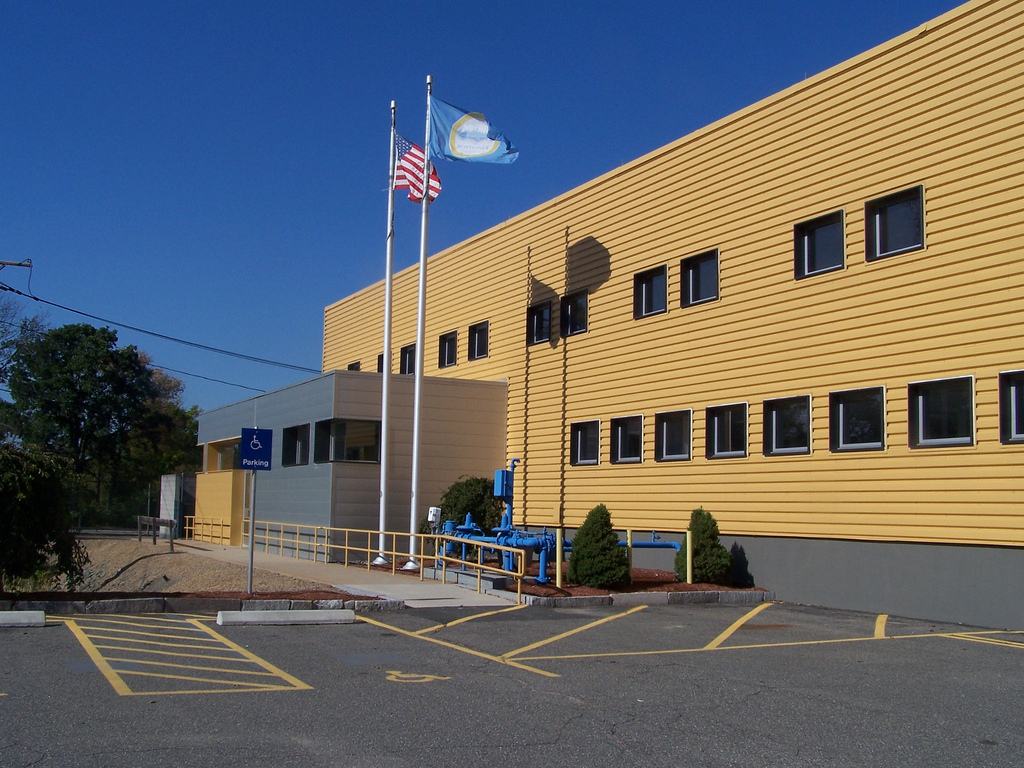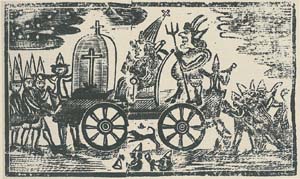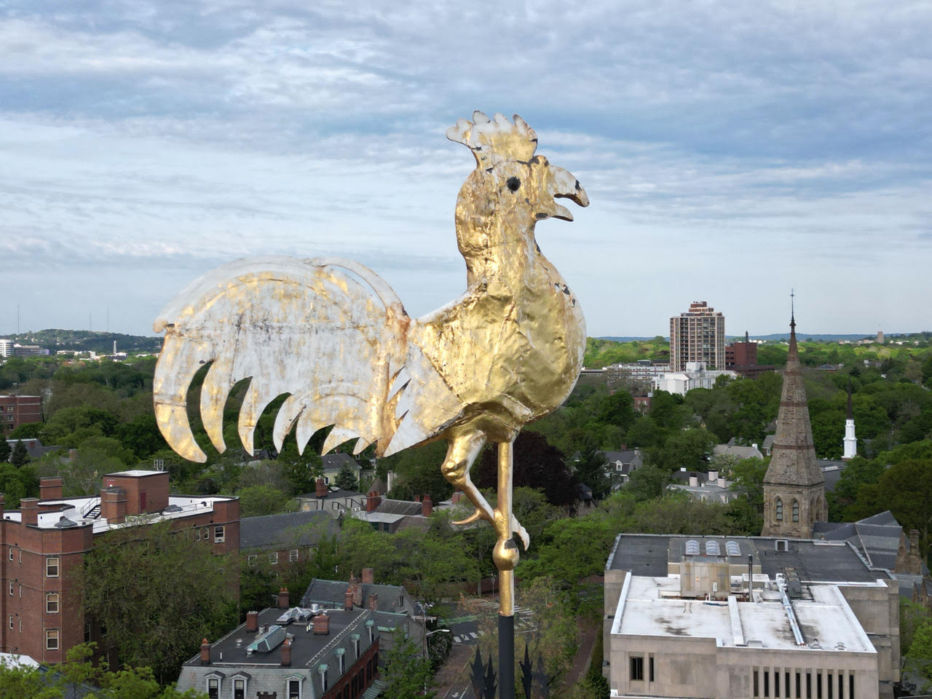Today’s Boston 1775 posting comes from Charles Bahne, a local historian based in Cambridge. In this “guest blogger” essay, Charlie discusses an artifact of the North End in the early 1700s and Cambridge in the late 1800s, making the case to preserve and reproduce it locally.
One of the most historic elements of the Cambridge skyline is coming down sometime soon: the big brown church with the rooster on top is losing its rooster.
The Executive Council of the First Church in Cambridge—the stone church on Garden Street, across from the Common—has decided to bring the cockerel weathervane down for its own safety. According to the
church’s website, drone videos have revealed significant and dangerous erosion of the gilding on one side of the cockerel, especially its large tail feathers. After extensive consultation, nationally recognized experts in the field of American Folk Art and historic weathervanes have strongly advised removal. The date for its descent is still being determined, but the goal is to make the move as soon as possible.
The church adds, “Once the cockerel is safely down and securely stored, church leaders and the congregation will need to consider next steps in the stewardship of this national treasure, including discerning whether the time has come to consider selling it. Another future decision is whether the Shem Drowne original should be replaced with a replica or something else.”
At 302 years of age, the five-foot gilded fowl is one of the oldest weathervanes still in use in America. Perhaps the first rooster weathervane, or “weathercock,” made in this hemisphere, he was fashioned in 1721 by
Shem Drowne, the same coppersmith who crafted the grasshopper vane atop
Faneuil Hall.
For a century and a half—nearly half of his existence—he has dominated the corner of Garden and Mason Streets, a landmark for Cantabrigians. And before he landed in Cambridge, the cockerel perched atop a church in Boston’s North End, where he led quite an interesting life.
The weathervane originated with a 1719 dispute among members of a North End parish, over the ordination of a pastor named Peter Thacher. Following Rev. Thacher’s rather tumultuous installation, the dissenting parishioners seceded from the original congregation and erected a new meeting house just three blocks away. As a deliberate insult to their former colleagues, they commissioned the cockerel weathervane for their new building: an allusion to Peter’s betrayal of Christ at the crowing of the cock. Upon placing the new vane on its spindle, “a merry fellow straddled over it, and crowed three times to complete the ceremony.”
Officially the “
New Brick Meeting House,” their 1721 structure was commonly known as the “Cockerel Church” in honor of its weathervane; and some people (perhaps not so jokingly) called it the “Revenge Church of Christ.”
Paul Revere worshipped in the Cockerel Church for most of his life; the back yard of his house abutted the meeting house property. The weathercock appears prominently in Revere’s 1769 print of “A View of Part of the Town of Boston,” where he towers over the North End neighborhood.
Before he changed his career from the ministry to writing, Ralph Waldo Emerson preached sermons under the cockerel weathervane for three years, as pastor of the Second Church in Boston, which had merged with the original New Brick parish.
A new building followed in 1845, on the same Hanover Street site, and the weathercock was placed atop it. When that building came down for an 1870 street-widening project, the vane was sold at auction. William Saunders, an antiquarian and a member of the First Church Cambridge congregation, bought it, and the cockerel found his new home, roosting atop First Church’s new stone building. Since 1873 he has graced the corner of Garden and Mason streets, overlooking Cambridge Common.
So our friend the rooster has quite a story to tell, over and above the weather forecast. It’s a story that’s unique to Boston and Cambridge. It’s important that he remain in our community, where he can continue to tell it to us. He must not be allowed to fly the coop, and land somewhere else.
In an ideal world, the historic fowl would be repaired and restored to the Garden Street perch where he has served for 150 years, fulfilling his ancient purpose of informing us which way the wind is blowing.
Should that ideal not be possible, for fragility or other reasons, then all of us in Cambridge and Boston have a stake in the decision. After a century and a half in our town—and another century and a half across the river—the cockerel weathervane has become a valuable member of our entire community. He’s an important part of our shared heritage, and not just an asset belonging to only one organization.
It is understandable, but always sad, when an institution chooses to monetize its patrimony, exchanging its heritage for financial gain. Given the significance of this historic weathercock, it would be a tragedy if he were sold to a distant museum, and exiled to a place where his story cannot be fully appreciated. It would be an even greater tragedy if he were sold to a private collector and locked behind closed doors where the public cannot appreciate him.
If the cockerel weathervane is to be sold, it is imperative for him to remain on public display locally, at the Museum of Fine Arts or a similar organization.
And what of us Cantabrigians who look skyward? We too will be losing a familiar friend, a piece of our history. If Shem Drowne’s classic cockerel is too fragile to remain on his perch above the Common, then he should be replaced with a likeness. Any monetary gain that First Church might realize from the sale should be used to finance the creation of a replica, to keep this fowl’s memory alive atop the tower which has been his home for so long.
After all, what is a big brown church without a rooster on top?
First Church is giving the community a chance to reflect on, ask questions about, and consider next steps following the decision to remove the cockerel, which was announced to the congregation on Sunday, September 10. A first listening session will be on Sunday, October 8, at 12:30, followed by a weeknight Zoom session on a date to be announced. For more information, including photos and videos of the weathervane’s current condition,
visit the First Church website.
(And thanks to Cousin Lynn and the late Ol’ Sinc of “Hillbilly at Harvard” for coining the phrase “big brown church with the rooster on top,” many years ago.)
Thanks, Charlie! The Rev. Peter Thacher who prompted that rupture in the New North Meeting wasn’t the same Rev. Peter Thacher who was active during and after the Revolution, but they were collateral relations.
Boston 1775 readers may recall that another weathervane attributed to Shem Drowne was put up for sale through Sotheby’s in January with an asking price around $400,000. I can’t find the result of that auction, but it shows the potential value of this sort of famous folk art.



